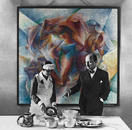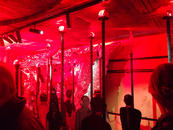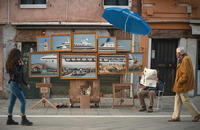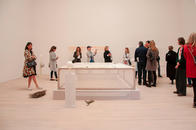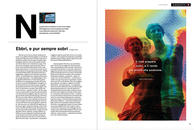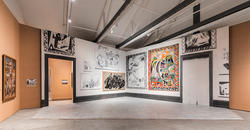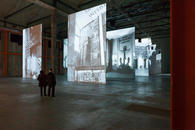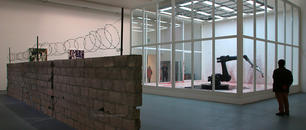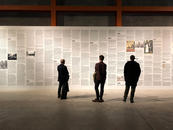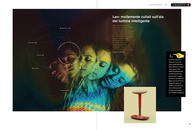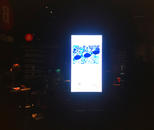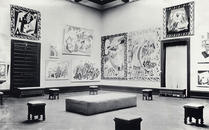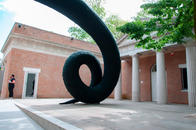Months of intense work have put a wrench in my editing of this “Snapshot,” dedicated to Venice’s Art Biennale. We have spent the past months trying to define the new direction of Brado with many new tools and resources (office catalog, single-product brochure, magazine, blog, video, fair stand); to design a new name, brand and image of products for large retailers (Høy), to come up with another new name, brand and image of a productive and commercial activity (Lievitarti).
A walk in the Gardens on a beautiful spring day
I admit that after reading the book "Contro le mostre" by Tomaso Montanari and Vincenzo Trione, in which what the authors denounce the biennialization of art world, I decided not to begin my visit to the Biennale in the Castello district of Venice. I did, however, visit the Gardens of the Biennale. I will later reserve the right to make a stop at the Arsenale and in some of the many (too many) collateral exhibits. Therefore, for now, I can only express myself partially, although the exhibitions in the Gardens are always decisive in defining the overarching vision of the show.
In most cases - with few exceptions - I felt embarrassed for the staff hired to guard the pavilions and exhibition spaces, most of which were young. I thought about what it would be like to stand in front of and guard such ugly, sad, repetitive, unrealistic, sloppy, insignificant works of art for months (and maybe even try to convince others of their merits).
If I compare what little I took away from my first visit – in terms of the formal, technical, conceptual – with the time I spent away from by desk, all I feel is contempt for the so-called contemporary art, this large speculative frame capable of offering nothing (not even novelty) without even the glaze of the past. I found the art to be structurally empty pretexts cloaked only in the charm of their disposition. (In theory, it’s well known, that you would could simply place a garbage bag in the center of any one of many remarkable pavilions of the Gardens, and you're done).
However, I think there is a deeper cultural problem here linked to globalization and its derivatives. The art audience is no longer composed of a discreetly educated eliteable to extricate themselves from varied knowledge and transversal references, claiming to be stimulated by varied and transversal knowledge and references. Rather, the audience today is heterogeneous and indistinct. It’s looking to be able to entertain conversation at an aperitivo. It’s a plethora of uncultured collectors hunting for more electrifying speculative opportunities than traditional ones. Thus, art has gradually adapted to its public, taking on itself and transmitting from time to time and in an increasingly fluctuating and fashionable way, vague smatterings and political, social, spiritual, spectacular suggestions, to the point of mixing them into a great warm cauldron that contains them all. Today, it does not even seem to cling to such vague language.
If I think about the feelings of vertigo I experienced after visiting one of very few brilliant exhibitions of recent years - “Post Zang Tumb Tuuum. Art Life Politics: Italy 1918–1943 ″ - it makes me want to cry by comparison. The brilliant exhibition was curated by Germano Celant, who was capable of fully exploring the Italian art produced during the two World Wars, or, in other words, the art of the Fascist period. How is it possible that in a world populated by multiple billions of people who are connected to one another daily, open and cultured and transversal as never before, hyper-technological and hypertrophied, spectacular and ultra-media, to proudly produce and exhibit so many ugly and insignificant works at what is considered the world summit of artistic research? And, on the other hand, how is it possible to produce so many significant, and sometimes prophetic, works in a negligible nation, during an industrial and technological “retro-guard,” full of illiterates that had become pool of self-sufficient anguish and sad, albeit carnival-like, dictatorship at the beginning of the 1900s in southern Europe?
But I would like to go beyond these improper and, perhaps even stupid, comparisons with high-brow art and focus on an art form which, by its very nature, is not elitist but popular: cinema. I recently saw a real blockbuster: "Bohemian Rapsody". I wasn’t surprised by the spectacular technical solutions and scenography, for example the impeccable reconstruction of the Live Aid concert; I wasn’t surprised by the fast pace of the editing; I wasn’t surprised by the quality of some of the main actors - all details that I believe are a given for the mega Hollywood productions that aim to impress the Academy of Motion Picture Arts and Sciences. On the other hand, I was surprised by the insignificance, the banality, the flatness, the irrelevance of the story itself, despite the enormous charisma and complexity of the characters to which the story is was based upon. The depth of the story is missing completely in the movie, which should instead substantiate it and act as the foundation of true lasting emotion and meaning. I struggle to understand how this miserable story has achieved such success with the public. By making the story more accessible and therefore trivializing it, the screenwriters were able to broaden the audience and increase sales - sacrosanct, for heaven's sake. But the film critics? All the awards? I really find it hard to justify them.
I would like to broaden the subject even further because I believe that art (so-called contemporary art, as well as the cinematographic one) is a simple sign of something much larger.
After exalting it for years, a revolt against complexity seems to be taking place. Recently, I received feedback from a book, "L'economia percepita. Dati, comunicazione e consenso nell'era digitale” or "The perceived economy. Data, communication and consent in the digital age", by Roberto Basso and Dino Pesole. First of all, the book was able to clarify how much the so-called horizontal communicationis only an appearance ( behind the lack of verticality there are actually large organizations that can be traced back to centers of economic power), and then how this apparent horizontal communication, having gradually eliminated every intermediate phase, has harmed learning and judgment, favoring easy answers to difficult questions and paving the way for clumsy trivializations, therefore also to populisms, always of Manichean matrix. Knowledge, as well as depth, and therefore complexity, are today generally seen as enemies. Concrete data and statistics no longer concern us. They are being systematically manipulated thanks to assumptions capable of becoming slowly distorted in the name of one's prejudices. Nothing is based on knowledge, or on really well-argued facts, is taken seriously because knowledge is immediately associated with the knowledge of an elite, and therefore a hoax to keep the masses in order. Knowledge is a conspiracy. What is not understood is no longer seen as a problem, or a consequence of a lack of understanding, but as an attempt at deception. Today everyone knows everything, and, in the worst case, they are being cheated.
In the end, I think that all this derives from an increasingly serious problem of the levels of perception of reality, a distorted perception that is triggered by a bad perception of oneself. The virtual worldwide revolt that is currently in progress is more than a child of poverty and economic inequalities. It’s the result of the frustration of the individual multiplied by the individuals of which the network is composed. A virtual and global uprising ... paradoxically ridden and managed by those who would like to vanquish (the large organizations attributable to centers of economic power). As long as it remains virtual, as long as it remains inside the network, a revolt doesn’t cause harm, being able, on the contrary, only to grow the profits and revenues of those who silently manage the network. A well-trained revolt, therefore, with so many poor volunteers, who are often angry, who produce tons of indispensable content every day for free and continuously for the powerful (real) enrichment of the few, the tip of the (virtual) iceberg.
There is nothing so democratic, nothing so horizontal. This misunderstanding, which is also a short circuit, is made possible thanks to the implicit assumption that moves our society of democratic well-being, based no longer on values but on the desires of individuals. Desires that have dramatically raised the threshold of dreams and expectations. This is the new poverty: not the lack of means but the disproportion between what one is (through what one has) and what one would like to be (through what one would like to have). Dreams and expectations that, once blurred, develop into anger, withdrawal, destructiveness. It’s a liberating punitive instinct - only virtual, not even real. It is the ache of a seemingly liberal-democratic world, in which it is everyone's right to be able to count on at least fifteen minutes of fame.
Perhaps that’s why that one day, while walking through the beautiful gardens of the Biennale, I felt sorry for the exhibiting artists, for the kids guarding their works and also for myself and the other paying spectators of a vacant show. All similar exhibits in a world deprived of meaning, unconsciously chained by horizontal communication that we believe to be free, but that is actually fertile breeding ground for large organizations, attributable to centers of economic power; they are able to direct and conveniently exploit our insipid prospects, our immoderate desires, even our own, ever less true, pleasures.
28/06/2019 Filippo Maglione



